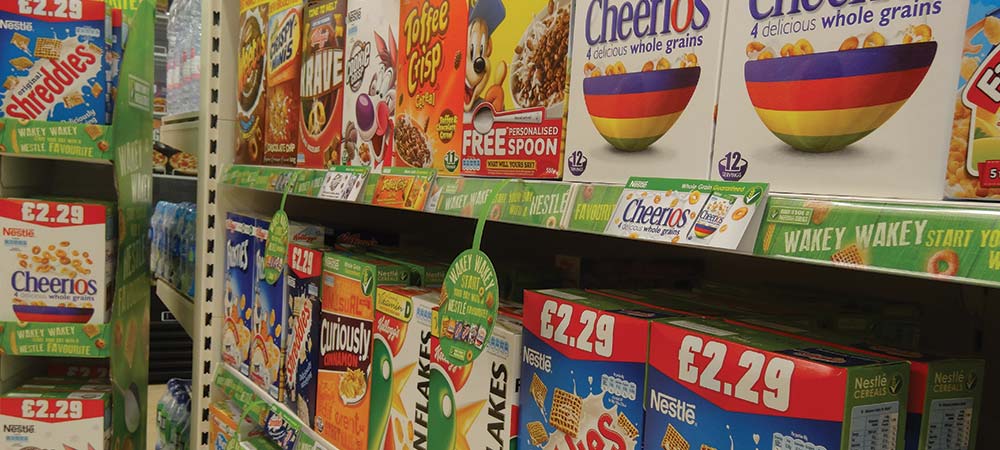Convenience store staples are the targets of the Government’s Childhood Obesity Strategy, with the newly published plan outlining more packaging and sugar strategies.
Published this morning, the strategy detailed a number of programmes it would introduce to tackle obesity in children, many of which are focused on shifting consumers away from sugary products.
Confirming that the sugar tax will go ahead, the Government referred to the levy as the “first major step towards tackling childhood obesity”.
The tax on soft drinks will kick-start a number of nationwide schemes, including a structured sugar reduction programme. Initially, the programme will focus on the nine categories that make the biggest contributions to children’s sugar intakes. These are:
- Breakfast cereals
- Yoghurts
- Biscuits
- Cakes
- Confectionery
- Breakfast baked goods, such as pastries
- Puddings
- Ice cream
- Sweet spreads, such as jam and Nutella
The programme will challenge “all sectors of the food and drinks industry” to reduce sugar in these products by 20% over the next four years. Although retailers were specifically named as one of those sectors, there will be no legal requirement to meet the target.
“This can be achieved through … shifting purchasing towards lower sugar alternatives,” the report said.
Following this move, the Government will begin to crackdown on “covering the remaining relevant foods and drinks, including any products that may be out of scope of the soft drinks industry levy, for example, milk-based drinks”.
As well as pushing manufacturers to implement portion reductions and calorie caps, new labelling systems will also be drawn up.
“Current sugar labelling shows the total sugar content of foods, but the new maximum intake recommendations are based on the specific sugars that are easily over-consumed, not all sugars,” the report said.
“The UK’s decision to leave the European Union will give us greater flexibility to determine what information should be presented on packaged food, and how it should be displayed.
“This might include clearer visual labelling, such as teaspoons of sugar, to show consumers about the sugar content in packaged food and drink.”
On the sugar tax, NFRN chief executive Paul Baxter said: “Piling on more ill-thought-out policies that will only make things more difficult for retailers while doing nothing to address the serious problem of obesity does not make sense. This Government must rethink the approach.”
However, health campaigners slammed the strategy as weak, with the Obesity Health Alliance calling for harsher restrictions.
A recent report found that small retailers will be the hardest hit by the sugar tax – click here to find out how convenience stores will be affected.





Comments
This article doesn't have any comments yet, be the first!